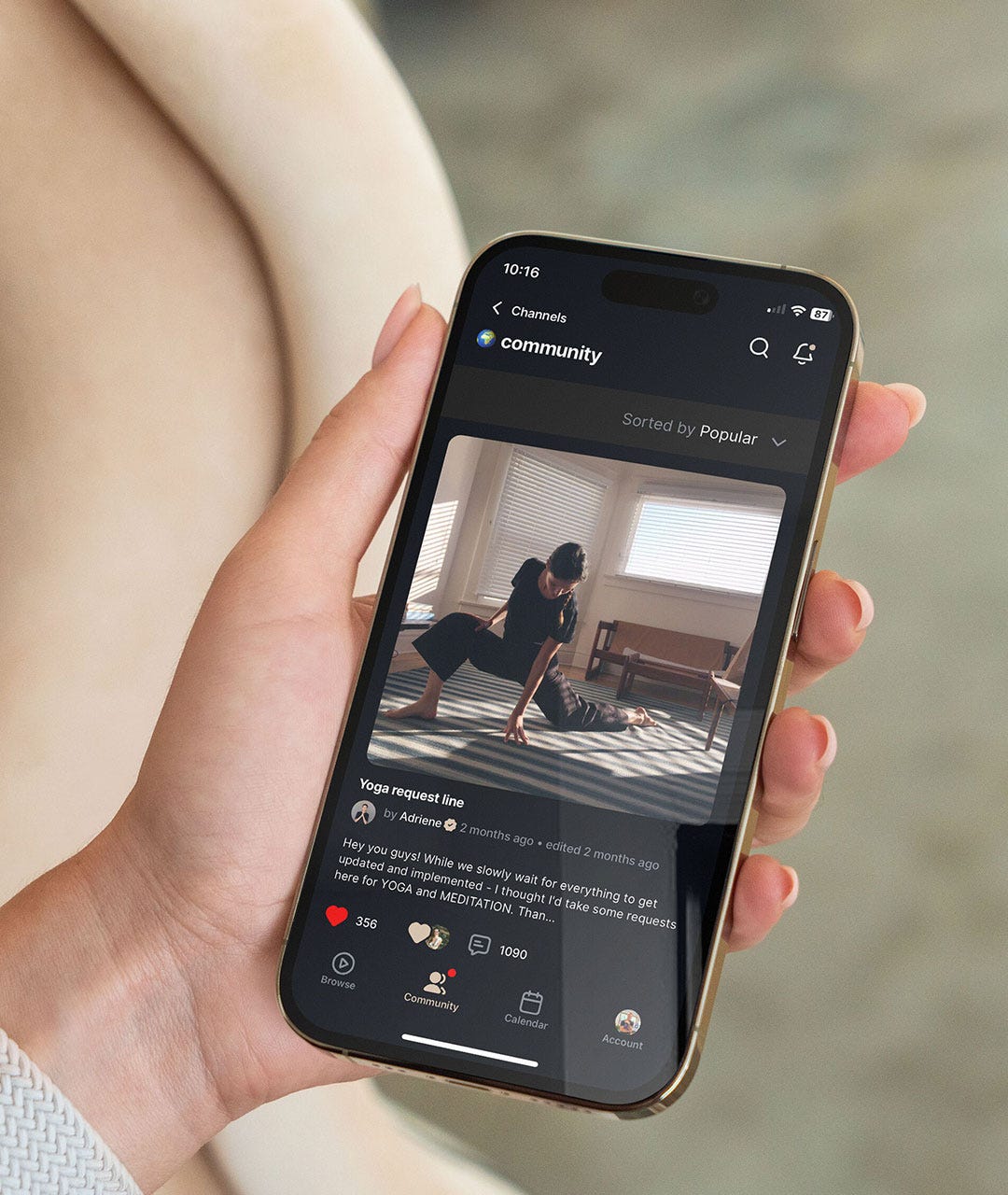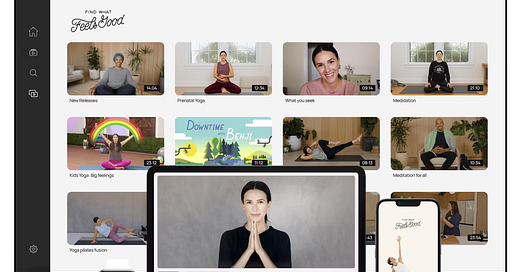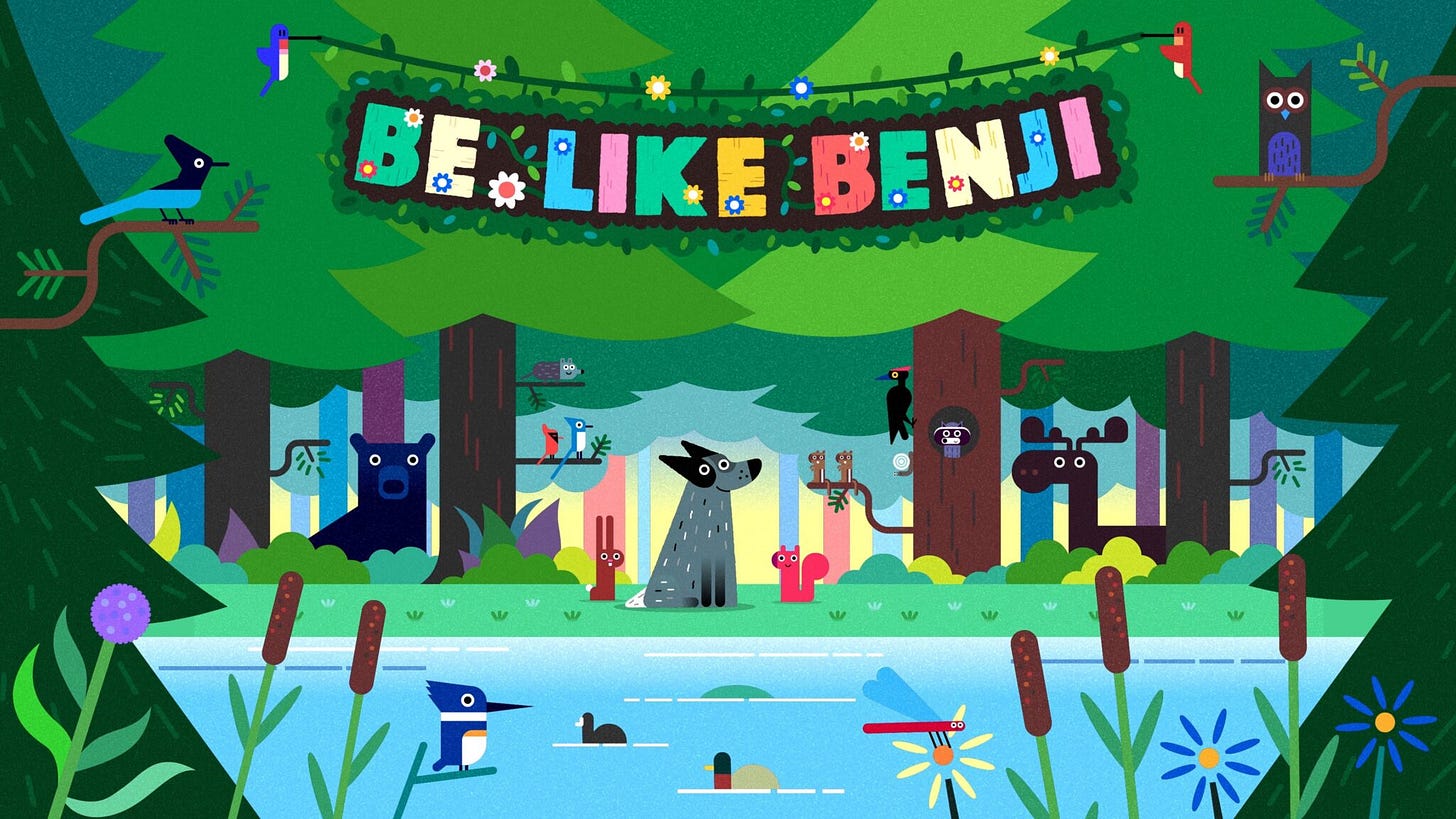How To Run Your Own Streaming Service
What it’s like to run an indie streaming service in the age of algorithms—and why we’re still doing it.
This is part of a series of extended posts updating my no-longer-available YouTube Book. For the first installment, click here. Later this week, I’ll be posting a index to all of the entires in chronological order.
Looking back, it still surprises me that we launched our streaming video membership when we did. We didn’t feel ready. It felt like a half-finished idea—a side project, something we were still figuring out.
But it worked.
In the first four years, 27,000 people signed up. Somehow, while we were busy building the YouTube channel, this little experiment had grown into something real.
That brings us to 2019.
Our focus was still on the YouTube channel. But behind the scenes, FWFG quietly kept growing. We weren’t actively promoting it—just sharing the PDF calendar and including links in our videos—but it had become more profitable than the YouTube channel.
We kept creating content. We even introduced new instructors, and the response was good. I stayed focused on improving the user experience—especially the apps and browser version. I thought about it constantly. But I didn’t promote it because I didn’t think it was good enough yet.
That was a mistake.
Obsession
My obsession with making it better led us into one of the most stressful times our business has ever faced.
I started to distrust the company hosting our SVOD platform. After an acquisition, relationships changed. Some weird things happened behind the scenes. I began to suspect their sales team was using FWFG in their pitches—maybe even sharing sensitive information.
At the same time, I was frustrated by our inability to improve the product. I had a list of features I wanted:
Integrated calendar in the app
A full redesign to reflect our brand
Custom playlists and search filters
None of that was possible with our current platform.
Then I remembered VidApp. I’d worked with them while helping launch Commune and loved both the team and their product. They build apps that integrate with services like Kajabi, Uscreen and WordPress. I’d also been in touch with PJ, the CEO of Uscreen. Their browser platform looked great, but at that time, their apps were a little limited. So adding VidApp into the mix was very compelling.
Over a few meetings at VidSummit 2019, we hatched a plan: ditch our curreant vendor, move everything to Uscreen (browser) and VidApp (apps).

The Migration
This wasn’t going to be easy.
Like many platforms, ours made it hard to leave. We didn’t just need to move our videos—we had to migrate all our members and untangle the payment system. We had to do it all without disrupting the member experience.
But if we could pull it off, we’d get beautifully redesigned apps with new features—including integrated calendars and personal scheduling tools.
The Uscreen team set up our new account. Our team got to work. I spent hours on phone calls and video meetings. There was some subterfuge involved—we didn’t trust our vendor, and we were trying to escape. We were especially worried we wouldn’t be able to get all our customer and payment data out of the system. That uncertainty added a ton of pressure to an already stressful transition.
Somehow, we pulled it off. We moved everyone. We redesigned everything. We kept members in the loop the whole time.
It wasn’t perfect. Android was especially rough. But our support team worked overtime to smooth things out.
When the dust settled, we had a completely redesigned platform, better than ever. The member experience had leveled up—and just as importantly, we were proud of it. We wanted to talk about it and we wanted to show it off, so promoting it was easy.

The Rebound
Our members started spreading the word. Not because we asked them to, but because they were genuinely excited. Friends told friends. Emails got forwarded. The reviews in the App Stores started pouring in—thousands of them, most of them five stars. That kind of organic energy can’t be faked. It pushed us up in the rankings and brought in more sign-ups, completely on autopilot.
We watched our membership count climb: 30,000. Then 35,000. It felt like validation—not just of the migration, but of the years we’d spent building something people cared about.
That energy filtered back to our team. We felt re-energized, like we’d come out the other side of a very long tunnel. We got back to work, releasing new content regularly and finally leaning into promotion. Emails went out. Social posts followed. For the first time in a while, it felt like everything was clicking.
Then came March 2020. Covid hit. The world shut down.
Shutdown
We didn’t know what was going to happen. We couldn’t shoot new videos, and we weren’t sure if people would still want what we offered. We were freaked out. I prepared myself for a year of downtime. We had enough resources to ride it out if things dropped to zero—but that still felt terrifying.
Then something unexpected happened.
With gyms closed and people stuck at home, they started searching for ways to stay active. Many of them found us—thanks to our YouTube channel and the newly revamped FWFG apps. Memberships didn’t just hold steady. They exploded. We saw a massive surge—more than doubling in just 60 days.
Fortunately, we had a deep content library ready to go. A lot of it was new to our YouTube audience, so it felt fresh even if we weren’t filming anything new. One spike of activity briefly knocked our site offline, but otherwise, everything held up.
For the first time in a long while, we could breathe. We had built something solid. And it was working when we needed it most.
Our Tiny TV Station
Today, five years later, things have found a new rhythm. After the wild ride of the covid bump, our numbers have settled around 50,000 monthly members. We’re back to making new videos. We’re promoting FWFG consistently again. It feels grounded—but in a good way.
And now that we’ve fully embraced what we are—a content company, not a tech company—something shifted. Running FWFG doesn’t feel like a scramble anymore. It feels creative. Collaborative. Even joyful.
It’s like running our own tiny TV station. We come up with ideas, green-light them ourselves, and just go for it. Want to try an animated series starring Benji? Why not? Let’s do it.
Because we serve a smaller group, we can really listen. We don’t have to obsess over algorithms or metadata. We don’t have to worry about going viral or chasing trends. We can experiment. We can follow our curiosity. We can make stuff just to see if it works.
And the recurring revenue? It changed everything.
YouTube will always be free. That’s our mission: to make high-quality yoga accessible to anyone, anywhere. But the reality is—free content isn’t free to make.
FWFG funds everything else we do. It outperforms AdSense. It outpaces sponsorships. And it gives us control.
As a creator, you’ve got to keep your business (and yourself) alive and financially healthy so that you can keep creating. Building a recurring revenue stream could stabilize your business, deepen your connection and lay a solid foundation for your future projects. And hey! It might even be fun.
Takeaways
Grow Slowly
Don’t get discouraged if the numbers aren’t massive at first. Growth doesn’t always look like a rocket ship. Sometimes it’s just two or three new members a week. That adds up over time. Focus on steady progress, listen to your audience, and keep improving. If the trend is going in the right direction—even slowly—you’re doing something right. Give it time.
Recurring Revenue Is a Game Changer
There’s a reason just about every company from Amazon to Tesla to Dollar Costco have built recurring revenue products into their businesses. Memberships create reliable and consistent income. A solid recurring revenue product can stabilize your business, reduce stress and potentially become a fun new way to connect with your audience.
Don’t Get Locked In
Technology moves fast, and what works for you now might not work a year from now. Make sure you can take your data with you if you need to switch. That means owning your customer lists, your content, and your billing relationships. Flexibility today gives you freedom tomorrow.
Use Your Own Payments Account
Some platforms want to process payments for you—but that can create problems down the road. Using your own Stripe or PayPal account means you keep full control. It makes bookkeeping simpler, gives you cleaner analytics, and makes things way easier if (or when) you bring in a finance pro to help you grow.
Keep Creating,
Chris
PS - I’ve recently had a lot of inquiries about some of our behind-the-scenes strategy and technology. I’m considering testing out a 4-week cohort-style class to get people up and running with a minimalist creator business framework. It would give a look at what’s worked for us and a preview of what we’re building for the next phase. You would walk away with a lead acquisition system and a setup to sell digital products. If this is something you might be interested in, respond to this with a YES. If there’s enough interest I’ll send more details soon.
PPS - In the meantime, I’ve published two posts about our camera gear and our digital tools.






